G1-Killer Assassin Preview
The Assassin is slightly longer than a standard ATX board, so we’re not sure if it will fit into every ATX case, although it’s certainly not XL-ATX-sized either. It also supports four-way ATI CrossFire, but only 3-way Nvidia SLI, as it doesn’t have an extra Nvidia NF200 chip, or PLX PCI-E multipliers. Gigabyte claims that this is because the X58 chipset provides enough lanes, and few people want Quad SLI anyway. However, we'd like to point out that a similarly small number of people want four-way CrossFire, yet Gigabyte has gone beyond the ATX spec to include it.Meanwhile, there’s 16-phase Driver MOS power circuitry for the CPU, eight SATA ports (two are SATA 6Gbps) and support for up to 24GB of memory via the six DIMM slots.
On the back, however, the rear I/O panel is pretty sparse compared to Gigabyte’s typical offerings. There are four USB 2 ports, four USB 3 ports (using a single NEC chip, with the connections split by a VLI hub), 7.1-channel audio outputs, optical and coaxial S/PDIF outputs and one Gigabit Ethernet port. We're surprised that there are two PS/2 ports, though. This old port appears to be remarkably resilient, despite the fact that we haven't seen a non-USB gaming mouse or keyboard for about five years.
There will also be a separate overclocking panel for the board, which will provide front-mounted USB 3 ports, an eSATA connector and an 'OC button' - the board has a small white header for this already. However, it’s worth noting that Asus has already released a similar front panel add-on for its ROG boards already, in the form of the OC Station.
The board certainly looks stylish enough, playing on the success of FPS titles such as Call of Duty with its gun-sight-esque heatsinks and magazine-shaped Southbridge heatsink. It even has a bullet-half popping out of the top.
Is this taking the gaming theme to a whole new level of integration and design-fun, or is it merely an overly ostentatious cash-in too far? We like the fact that Gigabyte has gone to the effort to do something different in its styling, in a market that's overwhelmed with black-and-blue or black-and-red boards. We're sure it will divide opinions, so let us know your thoughts in the forums.

MSI MPG Velox 100R Chassis Review
October 14 2021 | 15:04


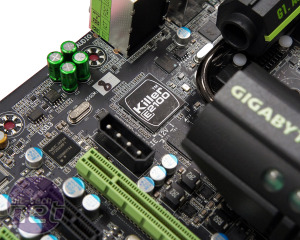
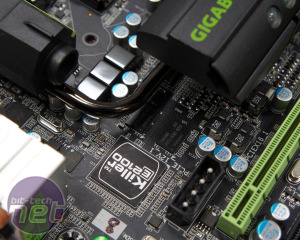
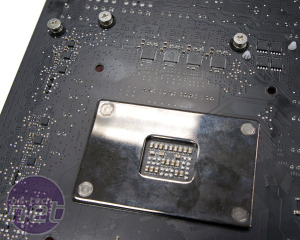
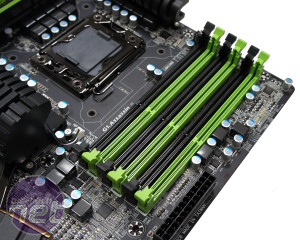

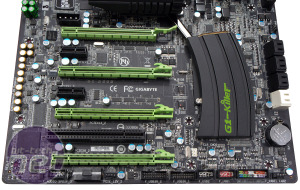







Want to comment? Please log in.